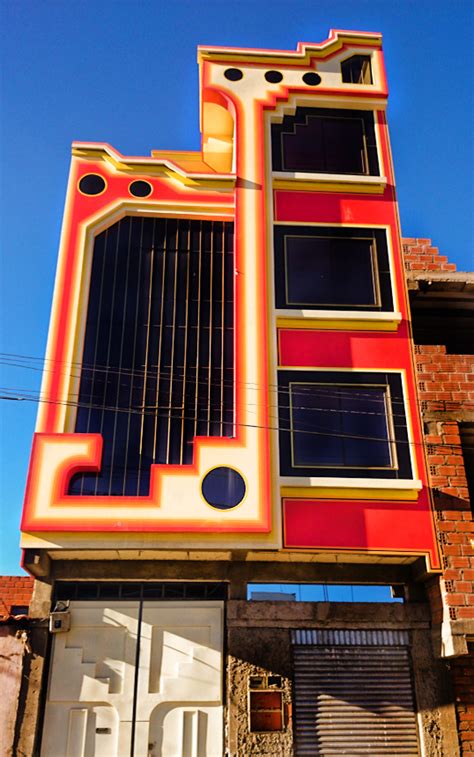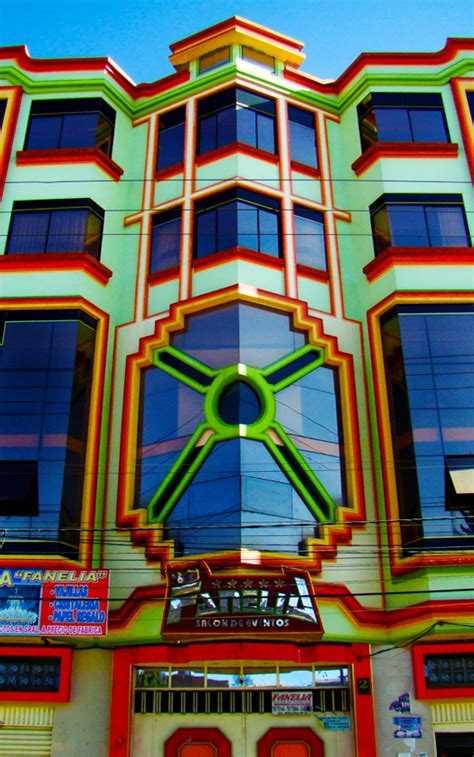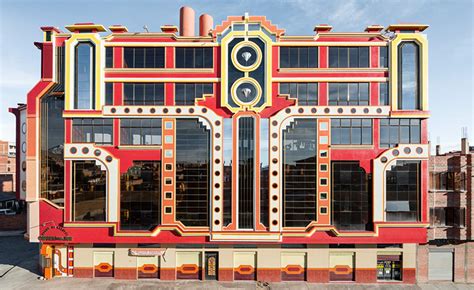You are using an out of date browser. It may not display this or other websites correctly.
You should upgrade or use an alternative browser.
You should upgrade or use an alternative browser.
Separated at Birth: America and Drakia
- Thread starter Ephraim Ben Raphael
- Start date
- Status
- Not open for further replies.
Images of East Asian Cities:
Nah, the region’s too divergent.
With the Japanese being intensely revanchist and Fascist (thus being intensely conservative and xenophobic as a result), I doubt that we would see the same aesthetics that we saw of OTL Japan with its idols and such. So, they may hold onto more antiquated art styles and architecture, even rebuilding as it was before the war, making Metropolitan Tokyo and all other Japanese cities look like New York City with Asian-style roofs. Somewhat similar to AALK’s Republic City. That even with the devastation of war, because those soulless brutalists on the other side of the pond and the degenerate Situationists would not be looked on too well.
On the other hand, I couldn’t see the Tokyo Aesthetic becoming the norm on Free China, either, as obviously stated on the last post. The most that we would see, perhaps, are intentionally bizarre architecture (not mere glass towers) sharply contrasting with the smattering of Shanghai Bund-style and traditional buildings, if they aren’t radical enough to tear such buildings down. (Thankfully, the author have come short of burning Confucian texts.)
The confederation cities would also be somewhat less devastated by war, so Seoul may some of its Fascist Aesthetic. However, being not as conservative as Japan may make it more amenable to contemporary styles, which could give it as the city that looks like OTL Tokyo, at least on the razed down areas and commercial districts.
Ironically enough, (modern) East Asian architecture may be known more by its Art Deco-style buildings than its ornate roofs ITTL.
Nah, the region’s too divergent.
With the Japanese being intensely revanchist and Fascist (thus being intensely conservative and xenophobic as a result), I doubt that we would see the same aesthetics that we saw of OTL Japan with its idols and such. So, they may hold onto more antiquated art styles and architecture, even rebuilding as it was before the war, making Metropolitan Tokyo and all other Japanese cities look like New York City with Asian-style roofs. Somewhat similar to AALK’s Republic City. That even with the devastation of war, because those soulless brutalists on the other side of the pond and the degenerate Situationists would not be looked on too well.
On the other hand, I couldn’t see the Tokyo Aesthetic becoming the norm on Free China, either, as obviously stated on the last post. The most that we would see, perhaps, are intentionally bizarre architecture (not mere glass towers) sharply contrasting with the smattering of Shanghai Bund-style and traditional buildings, if they aren’t radical enough to tear such buildings down. (Thankfully, the author have come short of burning Confucian texts.)
The confederation cities would also be somewhat less devastated by war, so Seoul may some of its Fascist Aesthetic. However, being not as conservative as Japan may make it more amenable to contemporary styles, which could give it as the city that looks like OTL Tokyo, at least on the razed down areas and commercial districts.
Ironically enough, (modern) East Asian architecture may be known more by its Art Deco-style buildings than its ornate roofs ITTL.
Its elites and the government, owing to the diverse languages but pretty much homogenised Catholic “Santo Niño” lowland culture, just heavily use the official language of government and leave the promotion of the local languages to the rest of the populace. IOTL, the American occupation that succeeded the Spaniards and the long Commonwealth years that succeeded therein pretty much erased the need to speak Spanish, so the (affluent) people followed on the new trend to speak perfect English. The 30’s still saw many in the high society having the ability to speak that language, but not in the 60’s and 70’s.What languages does the Philippines use as a lingua Franca?
However, the legacy of the Philippine revolution led to a soul-searching for its own nationhood, and nationalistic fucks that we were, it was decided that a national language is needed. A commission to determine one was called upon and agreed that it would be Tagalog, owing that it is the language of the capital and already the lingua franca of the archipelago and even the First Republic (aside from Spanish, of course). As expected intellectuals expressed their displeasure with this set-up up to the present day, but language never became the topic that ever warranted balkanisation even amongst their minds. Moves were supposed to be made to make the national language a reality, but it never did, owing to the great inertia of the documents already being written and still being written in English to this day.
There has been a concerted effort during the Japanese occupation and the puppet 2nd Republic to purge English, and that was when Tagalog really was used even in documents, but it didn’t really catch on with the establishment of the 3rd Republic. “Moves” were supposedly made during the Marcos and Cory years by “giving” the “national language” its “name”, first “Pilipino”, then “Filipino”, respectively. The Marcos Years contented itself maintaining the fiction of “Pilipino” being different enough from Manileño Tagalog. However, since the addition of a provision in the constitution of “further developing the language,” not only this “separate Tagalog and Filipino” language ossified, it also led to what I would call as radicals to advocate and sometimes even successfully insert inane philosophy on Filipino.
Also, that Filipino language philosophy also led to the widespread belief that the regional languages were mere dialects, although moves were being furiously made by both the government and the society to rectify it. I observed many of my teachers held that dismissive belief, and it was only the influx younger teachers and the passionate academics’ preaching in mid-to-late 2010’s that this started to change.
Also, the academia and the government is judiciously studying not only the national languages but also the regional languages as well, leading to sometimes needless and uncalled-for innovations in orthography to reflect for the changing language. All of this (the history, the most formal writing, the changes) are tenaciously taught by Filipino teachers to this day, although an academically unattentive generation prone to code-switching could radically shift the language yet again. The Philippine government opting to remove Filipino as a major subject in college would just accelerate this. Many of the academe were pissed off. I personally vouch for it and make an equivalent to the Normans infusing old English with French words.
In this case, however, Philippines was independent at the outset and the Americans merely pupetted it. The circumstances surrounding it could also be radically removed from us: maybe Manila Chavacano became popular and became the national language itself. Maybe, it was Tagalog that became the official language at the birth of the Republic itself. Or, the disagreements between Manila, Iloilo, and Cebu could lead to the maintenance of Spanish or even opt for English, seeing the strategic advantages after the British conquered much of the Indonesian archipelago. However, determining which happened from which would require the author giving a though about it, of which I doubt him doing so beyond reflecting it on our usually peaceful existence and the Second World War, maybe even leaning on that English solution. However, the largely small stature of the country along with the others in the region (Insulindia, Borneo, Vietnam) do justify the author glossing the region as English-speaking members of the Jakarta pact. Why? As much as Filipinos like to tell about its own culture, much could be drawn from the maps and updates already, hence the last paragraph.
I wonder what the equivalent of AH.Com would be like in this TL.
AHC: Situationist Drakia
AHC: Situationist Drakia
"The time would be easy to know, for then mankind would have become as the Great Old Ones; free and wild and beyond good and evil, with laws and morals thrown aside and all men shouting and killing and revelling in joy."I wonder what the equivalent of AH.Com would be like in this TL.
AHC: Situationist Drakia
Naldorssen, Lovecraft... or both?"The time would be easy to know, for then mankind would have become as the Great Old Ones; free and wild and beyond good and evil, with laws and morals thrown aside and all men shouting and killing and revelling in joy."
Seriously, though, did HPL exist here, or did he get butterflied away? I wouldn’t be surprised if he immigrated to Drakia; I seem to remember SM Sterling’s version did.
So I found a new type of architecture called Neo Andean and I can definitely see it appearing here as part of the Situationist movement or just something spawned from the next economic upswing.





For some reason it just screams CYBERPUNK!


For some reason it just screams CYBERPUNK!
The Situationist seem to be the kind of “fuck all, let’s do this” type, so it may have some structures in China. That said, howevee, the Free Chinese are already developing their own idea and “utterly nonsensical” aesthetic.So I found a new type of architecture called Neo Andean and I can definitely see it appearing here as part of the Situationist movement or just something spawned from the next economic upswing.





For some reason it just screams CYBERPUNK!
If anything, the Ultra-Latinists in Mexico could adopt those styles for their own houses if they wouldn’t build those in Mixtec style already. Obviously, the Peruvians also would. Outside of those regions, I’s bet it would be lightheartedly criticised as “stereo player architecture.”
That said, I could totally see a facade in New Yorks’ glass towers/art deco buildings being retrofitted to suit the aesthetics of a Peruvian potato restaurant.
Since we’re deep into this architecture talk, how would the architecture of Aurica be like, especially its administrative palace? I’d bet they’d like to copy the aesthetic of London, wouldn’t they?
I think the Situationists would be all kinds of styles in all kinds of colors. The government buildings will be more sedate since they are trying to not intimidate people. As for the US, I see more Art Deco and Latin styles. The Drakians will probably be more neo-classical Greek and Roman styles.The Situationist seem to be the kind of “fuck all, let’s do this” type, so it may have some structures in China. That said, howevee, the Free Chinese are already developing their own idea and “utterly nonsensical” aesthetic.
If anything, the Ultra-Latinists in Mexico could adopt those styles for their own houses if they wouldn’t build those in Mixtec style already. Obviously, the Peruvians also would. Outside of those regions, I’s bet it would be lightheartedly criticised as “stereo player architecture.”
That said, I could totally see a facade in New Yorks’ glass towers/art deco buildings being retrofitted to suit the aesthetics of a Peruvian potato restaurant.
Since we’re deep into this architecture talk, how would the architecture of Aurica be like, especially its administrative palace? I’d bet they’d like to copy the aesthetic of London, wouldn’t they?
While we've all talked about how much ahead the world is in the mechanical sciences let's not forget that they're pretty far ahead in the biological sciences too. With the Drakian's having already made impressive gains in the field genetic engineering with their atomic gardens. It honestly wouldn't surprise me if they might give recreating extinct species a try in the near future, for simple prestige. Who knows we might see an actual Jurassic Park in this worlds 90s with "dino's" actually being engineered copies created with bird and reptile dna.
Bookmark1995
Banned
Naldorssen, Lovecraft... or both?
Seriously, though, did HPL exist here, or did he get butterflied away? I wouldn’t be surprised if he immigrated to Drakia; I seem to remember SM Sterling’s version did.
Wasn't Lovecraft really racist?
Ganishka
Banned
Absolutely.So wouldn't he be a natural Drakian?
But he would also be butterflied away by this point.
There's almost no believable way Lovecraft wouldn't get butterflied out of existence.Naldorssen, Lovecraft... or both?
Seriously, though, did HPL exist here, or did he get butterflied away? I wouldn’t be surprised if he immigrated to Drakia; I seem to remember SM Sterling’s version did.
Even if Lovecraft still existed, he would have been a completely different person, and if somehow he managed to have the exact same personality as OTL he would never go to Drakia, as he hated everything except for Providence, Rhode Island, this included all whites who werent WASP or Nordics
I just started reading this timeline and I have some thoughts that I need to get out of my system.
I would not be surprised if the effects of a worse response to the India rebellion lead to an even worse situation for India, with Britain putting a far stronger chokehold on India then otl rebellion aftermath
From Britain’s perspective Drakia had done well at pulling its weight during the war, contributing weapons and munitions to the Confederacy, and sending troops to fight in North Africa and in India when a massive uprising threatened British rule over the subcontinent. The war in India led to the death of over a million Indians in the rebellion and its aftermath from acts of cruelty by Drakians putting down the rebels and India’s own famines and epidemics that followed. Attitudes in TTL’s more racist and white supremacist Britain (while there were reforms to colonial policy in India, no equivalent of Victoria’s OTL promise that Indians would receive the same rights as other British subjects materialized) were largely positive towards Drakians, albeit with the usual sense of superiority of Britons born in Britain over the descendants of colonists (Rudyard Kipling complained a lot about this OTL). Calls for political and labor reform in Drakia were limited to the radical wing of the Liberal Party and some human rights-minded activist groups.
I can imagine the Spanish absolutist and future right-wing nationalist wanting Cuba back and seeing it a part of mainland Spain thanks to the previous king's exile to Cuba and staying there for a while.
With Spain diplomatically isolated following its attempt to play both sides during the Last Crusade there was no one to protect it in 1884 when an incident on the Haiti-Santo Domingo border led to the Spanish-American War. Peace in 1886 saw Cuba and Santo Domingo added to the Union as states (Cuba woulda been IOTL if the South hadn’t nixed it for reasons of racism)- voluntarily on the part of Cuba, an insurgency would simmer in Santo Domingo for decades to come- the Philippines becoming an American Protectorate that ceded territory for American military bases, and Puerto Rico remaining Spanish. The Red government that had controlled Spain under different leaders since the Canadian was toppled, and an absolutist revolution ended with King Ferdinand IX realigning Spain with Britain (to the disapproval of the majority of Spaniards).
I would also not be surprised if this leads to brazil not becoming a republic in the future thanks to its association with the pro-slavery conservatives and aristocrats.When the liberal Emperor Pedro II (genetically the half-brother of this guy) began passing democratic reforms and initiated the process to ban slavery in Brazil, rich landowners and elements within the Brazilian military came together in an attempt to overthrow the monarchy and replace it with a Republic. They successfully killed the emperor, but his son Pedro III vengefully crushed the revolt and followed it with a purge of suspected Republican sympathizers. This sparked an exodus of Brazilian aristocrats and conservatives (who ironically weren’t monarchists), about 25,000 of whom settled in Drakia, where they joined the pre-existing Lusophone community.
Last edited:
Atomic gardens can't make targeted alterations to DNA, though, they just up the rate of random mutation. Their use says nothing about the understanding or lack thereof of the genetic and epigenetic factors actually at work in their products.While we've all talked about how much ahead the world is in the mechanical sciences let's not forget that they're pretty far ahead in the biological sciences too. With the Drakian's having already made impressive gains in the field genetic engineering with their atomic gardens. It honestly wouldn't surprise me if they might give recreating extinct species a try in the near future, for simple prestige. Who knows we might see an actual Jurassic Park in this worlds 90s with "dino's" actually being engineered copies created with bird and reptile dna.
It's like jumping from processing logs into planks straight to synthesizing carbon fibres without all those niggling little middle steps like organic chemistry or designing a suitable furnace.
- Status
- Not open for further replies.
Share: